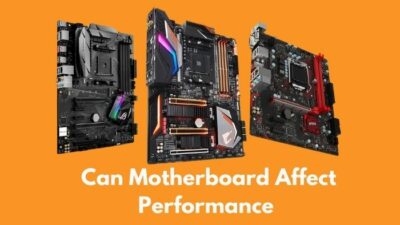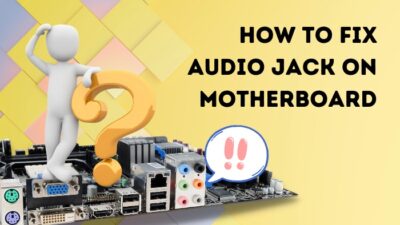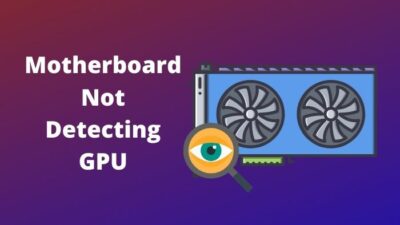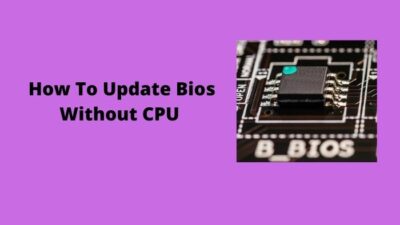You are finally done with your PC build but when you finally power it on for the first time, you are presented with an error suggesting that your hard drive can’t be detected.
You don’t have to tell me how frustrating that can be. You are probably wondering:
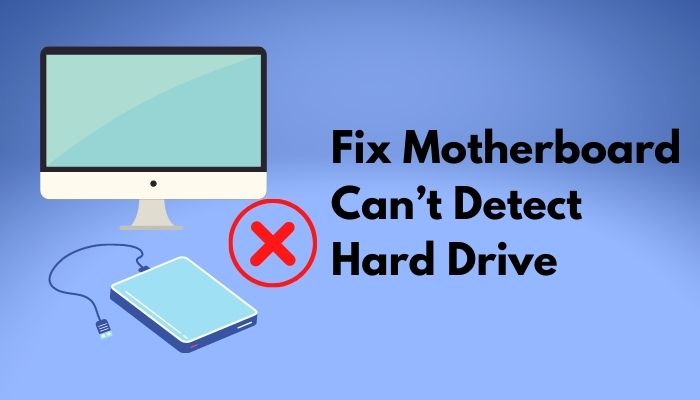
Why is my hard drive not detected in BIOS?
You don’t need to spend any more energy worrying about your hard drive any longer. I have experienced this exact same issue a year ago but I fixed it pretty quickly. I’ll tell you how I did that and what to do if that doesn’t work in this article.
I know you don’t want to wait any longer so let’s just get right into it. Do remember to read every section carefully so you don’t miss anything important.
How To Fix Motherboard Can’t Detect Hard Drive
Your hard drive detection error can be fixed very easily but you will have to do some troubleshooting first to find out exactly where this issue is coming from. Once you know the cause, you can get the fix pretty easily.
If you are lucky, you can fix this issue by simply changing a few settings. Otherwise, you might be dealing with faulty or damaged components.
Also, you don’t have to worry about losing any data present on your HDD with most of the fixes I’m going to be talking about.
Have some time to spare? Quickly check out our epic guide on are motherboard standoffs necessary.
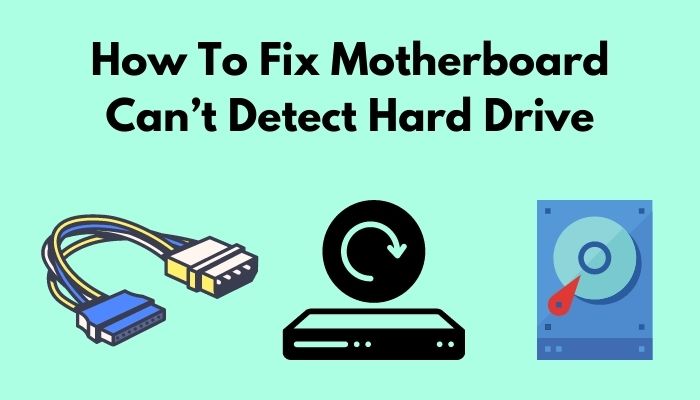
Here are the methods to fix motherboard can’t detect hard drive:
1. Replace The SATA Cable
A bad connection due to a faulty SATA cable is a pretty common reason for your hard drive consistently failing to detect.
The first thing you need to do is manually check that your SATA cable doesn’t have any sort of bending, scuffs, or protruding wires as these can break the insulation inside. Also, check how to Apply & Remove Thermal Paste On Motherboard PCB.
Remember to also concentrate on the connectors themselves to check for any misaligned pins. Also, it’s best if your SATA cable is shorter than 1 meter as it’s recommended by Seagate.
I recommend you try connecting the hard drive using another SATA cable. It’s even better if you are fully confident that this SATA cable actually works flawlessly. The best option is to simply borrow from a friend or use one of your old ones.
2. Turn On HDD Setting In BIOS
This setting is turned on by default in most modern PCs but there are some rare occasions where you might find that the setting was never turned on in BIOS.
In order to get to BIOS and configure these settings, follow these steps:
- Turn off your system completely.
- Power it on but this time keep pressing the Esc key repeatedly until a menu appears.
- Look for the key next to a setting named BIOS settings and press that on your keyboard.
- Once you are on the BIOS settings page, just turn on the setting for your desired hard drive.
- Remember to Save and exit from BIOS, otherwise, settings won’t change.
If you don’t see any settings for your HDD in BIOS, you should update your BIOS and try again.
Check out our separate post on Motherboard Affecting Performance on PC.
3. Update The Drivers For Your Hard Drive
For most users, the drivers should install automatically but sometimes the operating system fails to install them.
In this situation, you can simply visit the manufacturer’s website and download the latest driver available there. You could also try contacting their support team for help.
4. Verify Whether The Drive Is Spinning Or Not
You need to confirm that your drive is spinning because if it’s not spinning, then there is no way your hard drive will ever be detected by your PC.
The spinning issue usually occurs when your hard drive isn’t receiving the right amount of power.
You need to follow these steps to determine whether your drive is spinning:
- Turn off your computer completely.
- After that, open up the computer case and disconnect any data cables you find.
- Next, turn on your computer and carefully touch the side of the drive to see if the drive is spinning. You should feel a slight vibration for the spin.
- If you don’t feel anything, turn everything off and disconnect the power cord.
- Reconnect the power cord to the computer and see if you can hear anything.
- Do the same thing with your hard drive and if it still doesn’t spin, then it might be time to get a replacement.
If any of these fixes did not work for you, there’s a good chance that your hard drive is simply not working at all. I recommend testing it out on another PC just to be sure. Also, don’t wait too long to order a replacement and take advantage of the warranty.
Check out our post on will motherboard boot without CMOS battery.
Where Does Hard Drive Plug Into Motherboard?
The process might differ if you are using a different type of hard drive but typically, with the SATA cable, you just have to find the SATA port on the motherboard and connect it there. You can find this on the right side of most motherboards.
If you don’t consider yourself a tech geek, then remember to double-check and see whether you purchased an SSD or an HDD. They both have different installation processes so if you try to install an SSD by following the steps for HDD, it just won’t work.
The first thing you need to do when installing an HDD is mount it. You do this by securing it with screws to the cage. After that, you just have to connect the SATA cables properly. That’s all you need to do physically.
The next step is to just confirm that the drive is installed by going into BIOS and checking to see whether your drive is listed.
FAQ
Question: How do I know if my external hard drive is broken?
Answer: The best way is to visually check for any damages but if you are wondering about the health, you should look for any corrupted files or a significant drop in performance. These can help you determine if your hard drive is working properly.
Question: Is the external hard drive repairable?
Answer: Well, that will depend entirely on the extent of the damage done to the external HDD. You can certainly fix general errors using the CHKDSK command but if there is physical damage, then you might only have a very small chance of recovering the files.
Question: How many years does an external hard drive last?
Answer: Typically, any hard drive will last at least three to five years. Many actually last much longer but performance will not be optimal after many years.
Final Thoughts
The hard drive is right up there with the motherboard, CPU, and GPU as one of the central components of your computer so it’s natural to lose your mind when you can’t get it to work.
However, always keep in mind that you can find a fix for almost every issue you could ever find with your PC. If you enjoyed reading this article, remember to bookmark us so you can always come back to us whenever you are in any sort of tech trouble.

